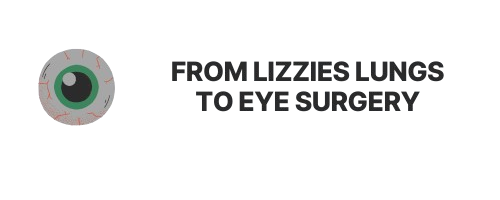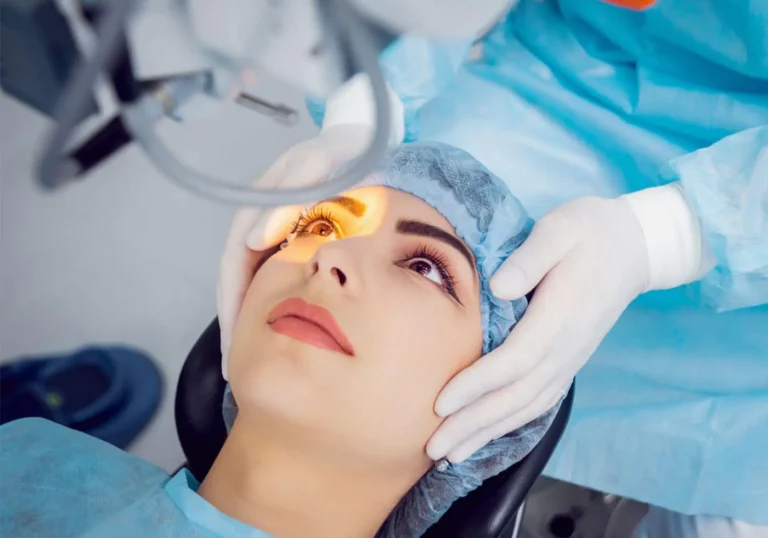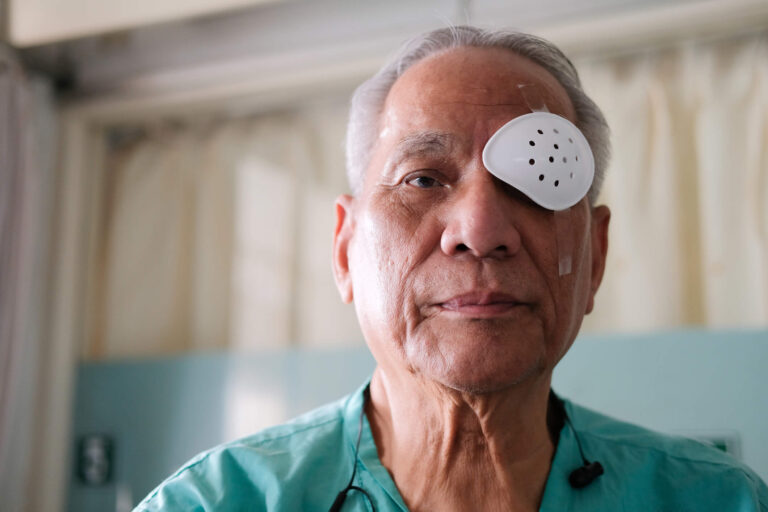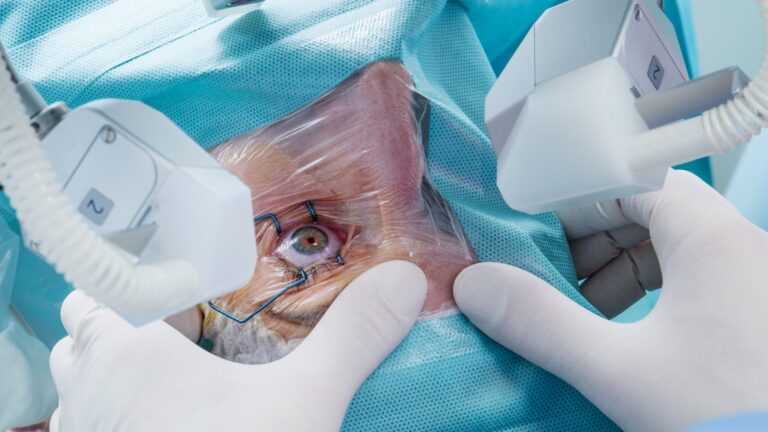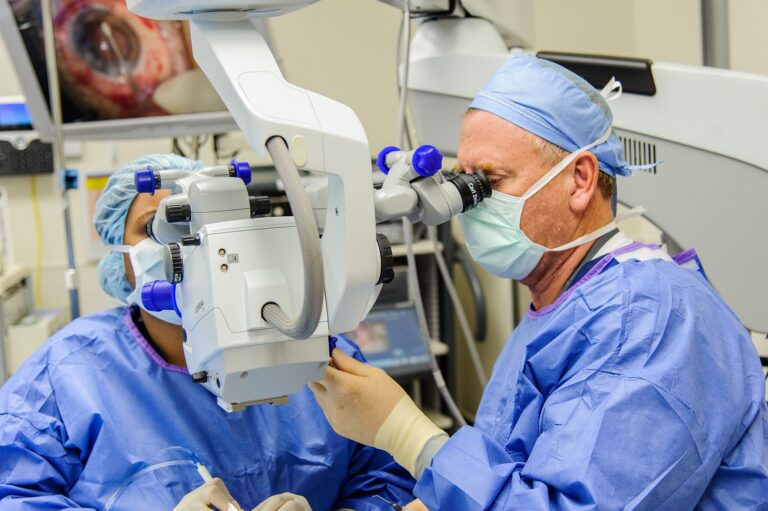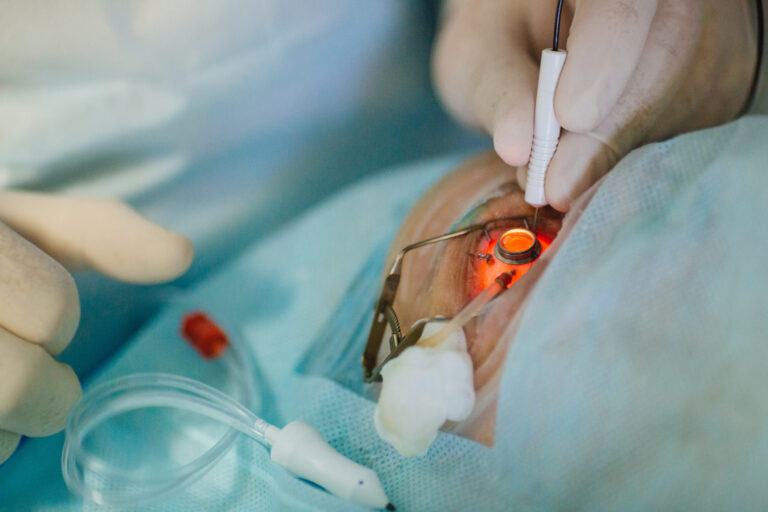Recovery Process After Glaucoma Surgery
Glaucoma is a serious eye condition that affects millions of people around the world. It is caused by an increase in pressure inside the eye, which can cause damage to the optic nerve and lead to vision loss. Glaucoma surgery is a common treatment option for those with moderate to severe forms of the disease. While it can be an effective way to preserve vision, it is important to understand what to expect during the recovery process.
Understanding Glaucoma Surgery
Glaucoma is a group of eye diseases that can cause damage to the optic nerve and lead to vision loss. It is often caused by a buildup of pressure inside the eye, which can be caused by a variety of factors, including genetics, age, and other medical conditions. While there are many treatments available for glaucoma, including eye drops and medications, sometimes surgery is necessary to control the disease and prevent further damage to the eye.
There are several types of glaucoma surgery, but all involve creating a drainage channel to help lower the pressure inside the eye. The most common types of glaucoma surgery include trabeculectomy, an implantable device known as a shunt, and laser surgery. Your doctor will determine which type of surgery is most appropriate for your specific condition.

Types of Glaucoma Surgery
Trabeculectomy involves creating a tiny hole in the eye to allow fluid to drain out. A small flap is then created to cover the hole and regulate the flow of fluid. This procedure is typically performed under local anesthesia and takes about an hour to complete. After the surgery, patients will need to use eye drops and attend follow-up appointments with their doctor to monitor their progress.
An implantable device known as a shunt can also be used to treat glaucoma. This small tube is placed in the eye to divert fluid away from the optic nerve and lower the pressure inside the eye. Shunt surgery is typically performed under local anesthesia and takes about an hour to complete. After the surgery, patients will need to use eye drops and attend follow-up appointments with their doctor to monitor their progress.
Laser surgery involves using a laser to create a small hole to improve fluid drainage. This procedure is typically performed in a doctor’s office and takes only a few minutes to complete. After the surgery, patients may experience some discomfort or sensitivity to light, but this usually resolves within a few days.
How Glaucoma Surgery Works
Regardless of the type of surgery, the goal is to lower the pressure inside the eye by improving the flow of fluid. This can help prevent further damage to the optic nerve and preserve vision in the affected eye. Glaucoma surgery is typically performed on one eye at a time, with the second eye being treated if necessary at a later time.
After the surgery, patients will need to attend follow-up appointments with their doctor to monitor their progress and ensure that the surgery was successful in lowering the pressure inside the eye. In some cases, additional surgeries may be necessary to further lower the pressure or address any complications that arise.
Risks and Benefits of Glaucoma Surgery
While glaucoma surgery can be an effective way to preserve vision, it does come with some risks. These include infection, bleeding, vision loss, and damage to the eye. However, the benefits of surgery generally outweigh the risks, particularly in cases where other treatments have been unsuccessful. Your doctor will discuss the potential risks and benefits of surgery with you in detail before the procedure.
Some of the benefits of glaucoma surgery include improved vision, reduced reliance on medications, and a decreased risk of further damage to the optic nerve. However, it is important to remember that the success of the surgery depends on a variety of factors, including the severity of the glaucoma and the patient’s overall health.
If you have been diagnosed with glaucoma, it is important to work closely with your doctor to determine the best course of treatment for your specific condition. While surgery may be necessary in some cases, there are many other treatments available that can help control the disease and preserve your vision.
Immediate Post-Surgery Care
After the surgery is complete, you will be taken to a recovery room where your eye will be monitored for any complications. You will likely experience some discomfort and blurry vision for the first few days after surgery. Your doctor will prescribe pain medication and eye drops to help manage these symptoms.
It is important to note that everyone’s recovery experience is unique and can vary depending on the individual’s health and the specifics of the surgery. Some people may experience more discomfort than others, and some may heal faster than others.
What to Expect Right After Surgery
In the hours immediately following surgery, your eye may be covered with a protective shield to prevent accidental scratching or rubbing. This shield can also help to protect your eye from bright light or debris. You may feel a bit disoriented or groggy from the anesthesia, so it is important to have someone with you to help you get home safely.
You will also be instructed to avoid activities that could increase pressure in the eye, such as bending over or lifting heavy objects. Your doctor will provide specific instructions on how to care for your eye during this time, including how to wash your face and when you can resume normal activities.
Medications and Eye Drops
It is important to follow your doctor’s instructions regarding medication use and eye drop administration. These medications are designed to help manage pain and inflammation, and to reduce the risk of infection. Your doctor may prescribe antibiotics to prevent infection, and you may be required to use eye drops multiple times a day in the weeks following surgery.
Some people may experience side effects from the medications, such as stinging or burning in the eye. If you experience any unusual symptoms, be sure to contact your doctor right away.
Monitoring Eye Pressure
Your doctor will monitor the pressure inside your eye in the days and weeks following surgery. This may involve frequent office visits to check your eye pressure and ensure that the surgical site is healing properly. Your doctor may also use a tonometer to measure the pressure inside your eye.
It is important to attend all follow-up appointments to ensure the success of the surgery. Your doctor may also recommend additional tests, such as visual field tests, to monitor your progress.
While the recovery process can be challenging, it is important to remember that it is a crucial step in ensuring the health of your eye. With proper care and attention, you can minimize the risk of complications and enjoy improved vision for years to come.
At-Home Recovery Tips
Proper at-home care is just as important as medical care in ensuring a successful recovery from glaucoma surgery. The following tips can help promote healing and reduce the risk of complications:
Rest and Sleep Recommendations
It is important to get plenty of rest during the first few days after surgery. Your body needs time to recover and heal. Try to avoid activities that cause strain to your eyes, such as reading or watching TV for extended periods of time. Instead, take short naps throughout the day to help reduce eye strain and promote healing. Additionally, try to sleep with your head elevated to reduce swelling.
Activity Restrictions and Precautions
During the first few weeks after surgery, it is important to avoid activities that could cause pressure in your eye. This includes heavy lifting, bending over, and strenuous exercise. You should also avoid any activities that could cause trauma to your eye, such as contact sports. It is also important to avoid rubbing your eye or getting water in it, as this can increase the risk of infection and slow down the healing process.
Proper Eye Care and Hygiene
Keeping your eye clean and free from infection is crucial during the recovery process. Your doctor will give you specific instructions on how to clean your eye and surrounding area. This may include using a moistened cotton ball or special eye drops. Be sure to follow your doctor’s instructions carefully to avoid any complications. Additionally, it is important to maintain good hygiene during the recovery process. This includes washing your hands frequently and avoiding touching your eye or face unnecessarily.
By following these at-home recovery tips, you can help ensure a successful recovery from glaucoma surgery. Remember to take it easy and give your body the time it needs to heal. If you have any concerns or questions during the recovery process, be sure to contact your doctor for guidance.
Follow-Up Appointments and Monitoring
Regular follow-up appointments with your doctor are crucial in ensuring the success of your glaucoma surgery. Your doctor will monitor your eye pressure, assess the success of the surgery, and adjust your treatment plan as needed.
Importance of Regular Check-Ups
While glaucoma surgery can be an effective way to manage the disease, it is important to attend regularly scheduled appointments to ensure that your condition is being properly managed. Early detection and treatment are crucial in preventing vision loss.
During your follow-up appointments, your doctor will check your eye pressure and examine your eyes to make sure that the surgery is working as intended. They may also perform additional tests, such as visual field testing, to monitor your vision.
It is important to attend all of your scheduled appointments, even if you are feeling well. Your doctor may be able to detect changes in your condition before you notice any symptoms, allowing for earlier intervention and better outcomes.
Assessing the Success of the Surgery
Your doctor will assess the success of the surgery by monitoring your eye pressure and visual changes. It may take several weeks or even months to determine if the surgery was successful in managing your glaucoma.
During this time, it is important to follow your doctor’s instructions carefully. This may include using eye drops or other medications as prescribed, avoiding certain activities, and attending all of your follow-up appointments.
If your doctor determines that the surgery was not successful in managing your glaucoma, they may recommend additional treatment options. This may include laser surgery, medication, or a combination of treatments.
Adjusting Treatment Plans as Needed
If your glaucoma is not effectively managed by surgery alone, your doctor may adjust your treatment plan to include medication or laser treatment as well. This will help ensure that your condition is being properly managed and that you are not at risk of further vision loss.
Your doctor will work with you to determine the best course of treatment for your individual needs. This may involve trying different medications or adjusting the dosage of your current medication.
It is important to communicate openly with your doctor about any changes in your condition or any side effects you may be experiencing from your medication. This will help your doctor make informed decisions about your treatment plan and ensure that you are receiving the best possible care.
Conclusion
The recovery process after glaucoma surgery can be lengthy, but with proper care and attention, it is possible to have a successful outcome. It is important to work closely with your doctor to ensure that you are following their instructions and attending all follow-up appointments. With the proper care and treatment, it is possible to manage glaucoma and preserve your vision for years to come.
Related:
- From Blurry to Brilliant: What Really Happens During Laser Eye Surgery
- How Much Does a Sleep Study Cost in Australia? A Complete Guide
- Sleep Disorders Test: Signs You May Need One and How to Start
- Behind the Laser: What Your Eye Surgeon Wants You to Know
- Why You Should Never Settle: Finding the Best CPAP Mask for You
